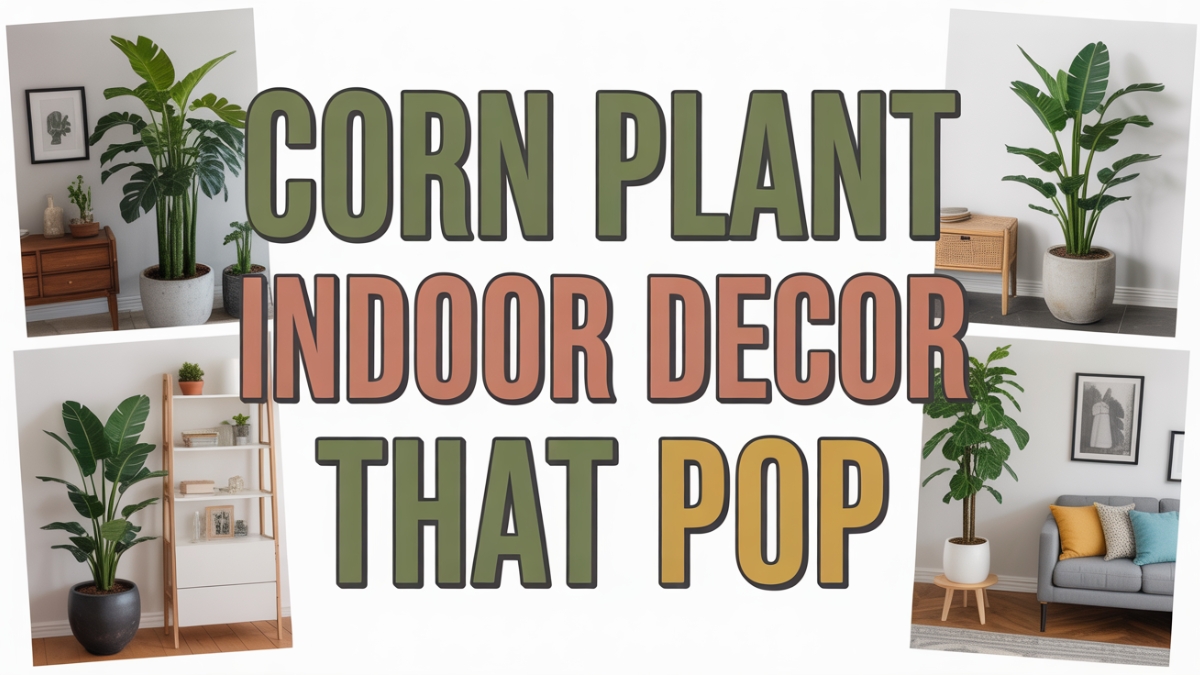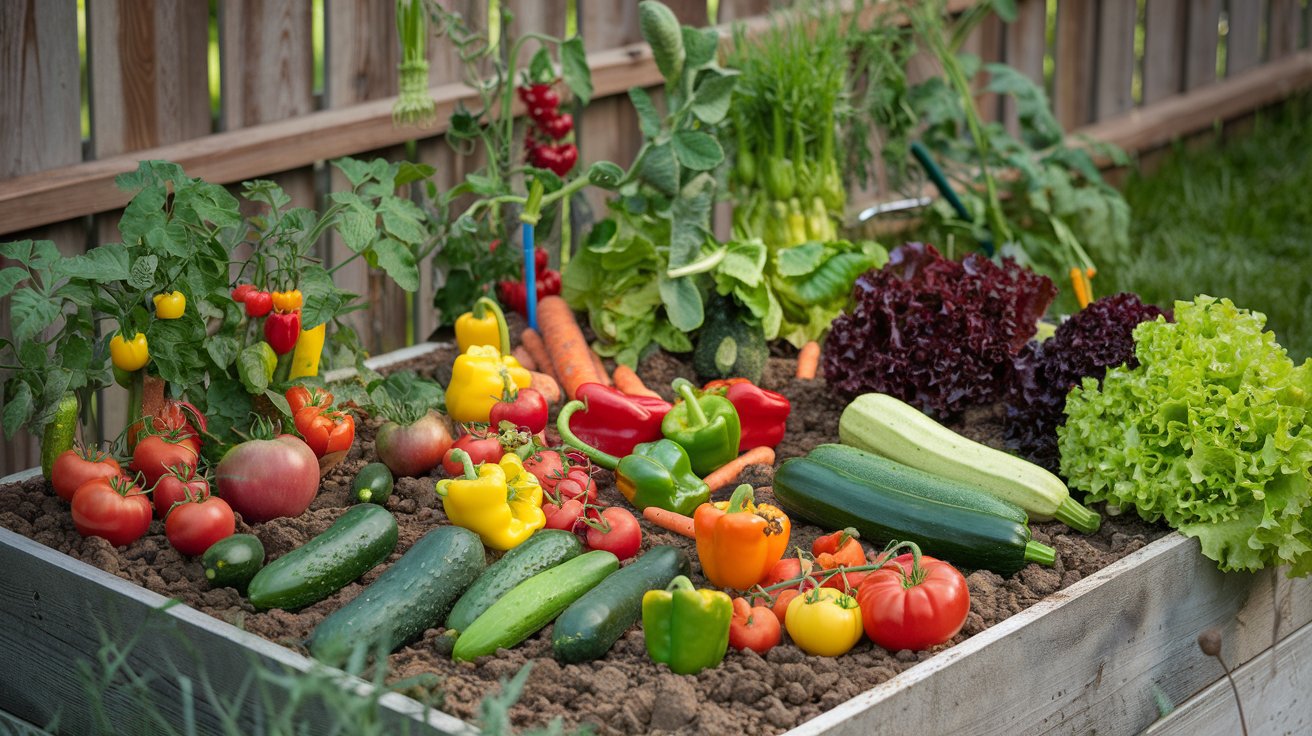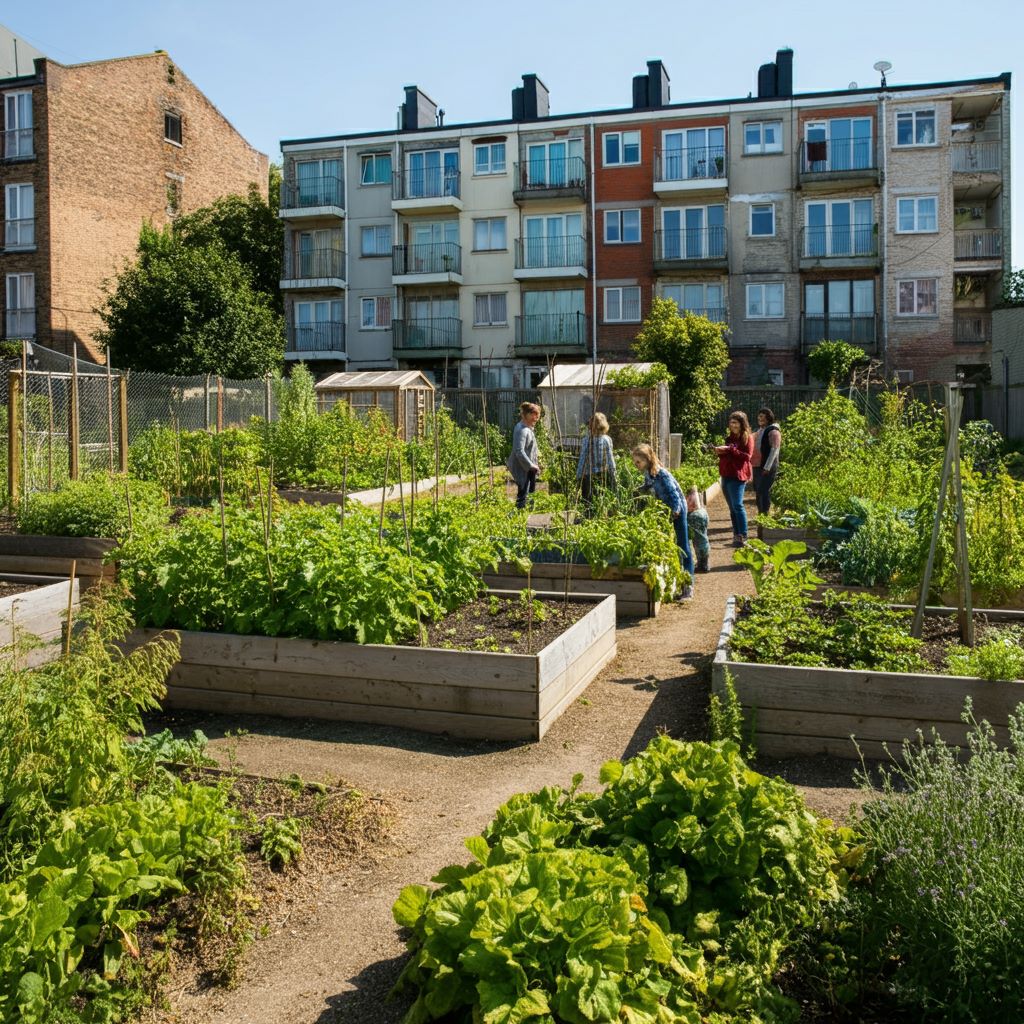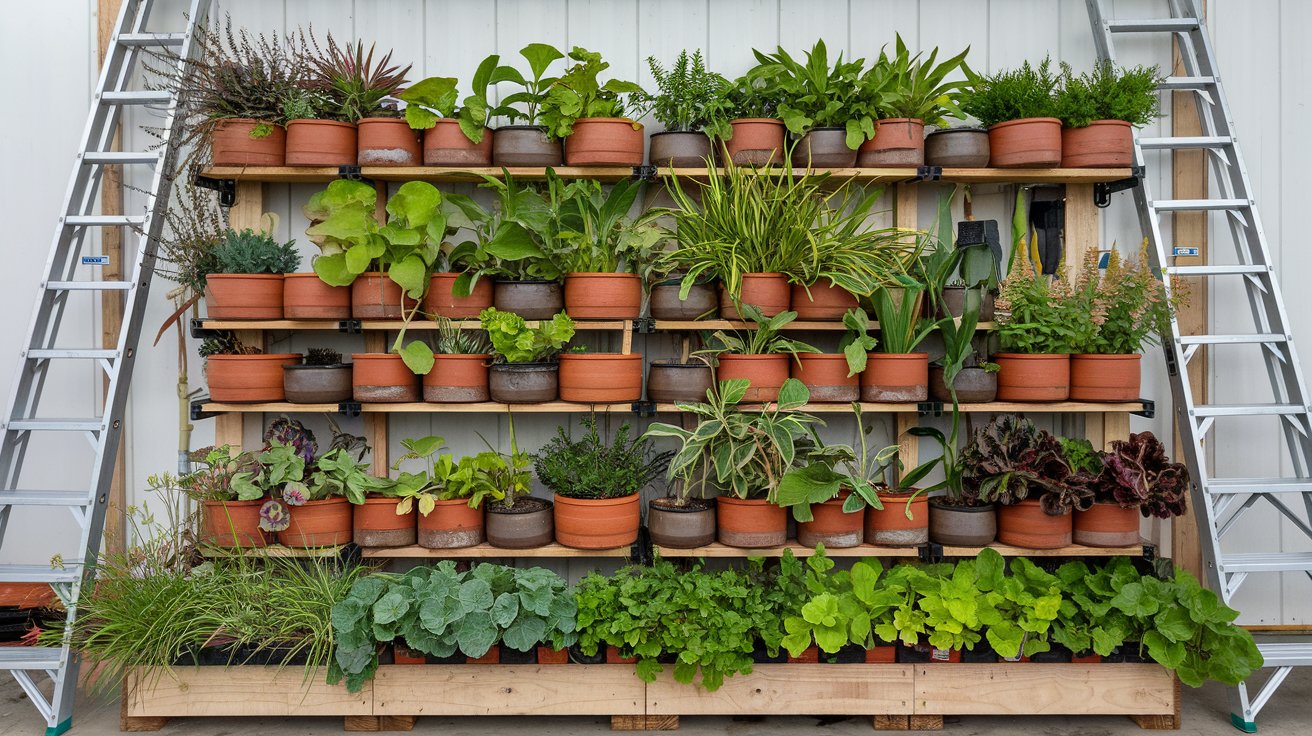Indoor plants have an uncanny ability to breathe life into a room, and the corn plant (Dracaena fragrans) is no exception. While raised bed gardening tomatoes often take center stage in outdoor spaces, it’s the architectural grace of the corn plant that commands attention indoors. Tall, lush, and refreshingly low-maintenance, this tropical beauty doubles as a statement piece and air purifier, effortlessly blending functionality and design.
If you’re an urban dweller or eco-conscious interior stylist looking for greenery that pops without the fuss, the corn plant might just be your leafy soulmate.
Key Takeaways
Table of Contents
1. Why Corn Plants Are a Top Indoor Decor Choice
Corn plants have become a staple in interior design for a good reason. With glossy, lance-shaped leaves and a natural growth habit that mimics a mini tree, they bring vertical elegance to any space.
Unlike many fussy houseplants, corn plants adapt well to indoor conditions. According to NASA’s Clean Air Study, Dracaena fragrans can help filter harmful toxins like formaldehyde and benzene—making it both a decorative and health-enhancing addition to your space.
From bohemian lofts to sleek modern apartments, their flexibility and calming green hues make them universally appealing.
2. Designing with Corn Plants in Small Spaces
Even if you’re working with limited square footage, the corn plant can serve as a vertical accent without crowding your room. It thrives in corners, beside sofas, or as a room divider in open-plan layouts.
Container Styling Tips:
Choose pots that match your aesthetic while supporting healthy drainage.
Interior Style | Pot Type | Material Recommendation |
Minimalist | Matte white cylinder pot | Ceramic or concrete |
Bohemian | Woven basket liner | Rattan or jute |
Scandinavian | Tapered light wood stand | Birch or beechwood |
Modern Industrial | Black metal stand | Steel or iron |
3. Light & Placement for Maximum Visual Impact
The corn plant thrives in bright, indirect sunlight, mimicking its natural tropical understory environment. Too much direct sun can scorch the leaves, while too little can cause yellowing or drooping.
Pro Tip: Place your corn plant near a north or east-facing window, or use sheer curtains to filter intense rays.
One plant enthusiast found that her corn plant placed in a well-lit corner grew 2x faster than the one placed in a dim hallway—proof that placement really does matter.
4. Soil, Water & Temperature—Balancing Form and Function
While aesthetics matter, keeping your corn plant healthy ensures it keeps looking fabulous.
📊 Table: Seasonal Indoor Corn Plant Watering Schedule
Season | Frequency | Tips |
Spring | Every 7–10 days | Resume feeding with fertilizer |
Summer | Every 5–7 days | Increase humidity and mist occasionally |
Fall | Every 10–14 days | Reduce water as plant slows growth |
Winter | Every 14+ days | Avoid overwatering in low light periods |
Top Fertilizers:
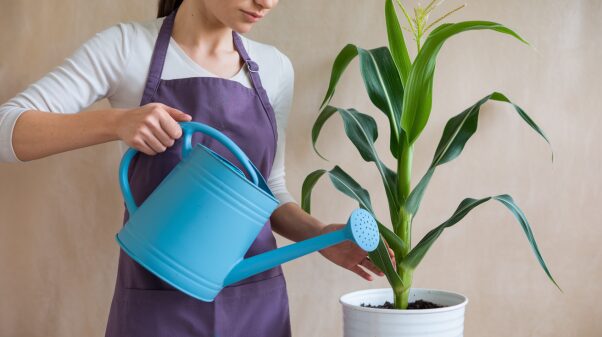
5. Indoor Corn Plant Varieties & Size Management
Dracaena fragrans comes in several beautiful cultivars ideal for indoor decor.
Popular Varieties:
Height Potential:
Corn plants can grow up to 6–10 feet indoors if left unpruned. But don’t worry—it’s easy to manage with strategic trimming.
Pruning Tips:
Propagation Tip:
Snip healthy stems and root in water or moist soil to create new plants.
Indoor Corn Plant Maintenance & Common Problems
Even hardy houseplants face challenges. Here’s how to address the most common corn plant problems:
Problem | Cause | Solution |
Yellow leaves | Overwatering or poor drainage | Adjust schedule, change soil |
Drooping leaves | Underwatering or cold drafts | Check soil moisture and air circulation |
Brown tips | Low humidity or salt buildup | Increase humidity, flush soil monthly |
Leaf spots or pests | Mites or fungal issues | Use neem oil or insecticidal soap |
7. Corn Plants, Pets & Feng Shui Energy Flow
Are corn plants safe for pets?
They contain saponins, which can cause mild stomach upset in cats or dogs if chewed. Keep out of reach or choose pet-friendly alternatives if needed.
Feng Shui Benefits:
Corn plants are tied to the wood element in Feng Shui, which symbolizes growth, vitality, and renewal.
Expert Insight:
“Corn plants invite a peaceful, upward energy—perfect for areas needing balance or calm,” says Master Lin, certified Feng Shui consultant.
8. Real Design Ideas: Styling Corn Plants That POP
Get inspired by how designers and homeowners creatively incorporate corn plants:
Design Pairings:
Room-by-Room Corn Plant Decor Ideas
Room | Placement Idea | Bonus Tip |
Living Room | Beside TV stand | Use uplighting to cast shadows on wall |
Bedroom | Near window for calm energy | Pair with lavender or peace lilies |
Office | Behind desk for green backdrop | Boosts concentration and air quality |
Entryway | Flank entry table with twin plants | Sets a grounded first impression |
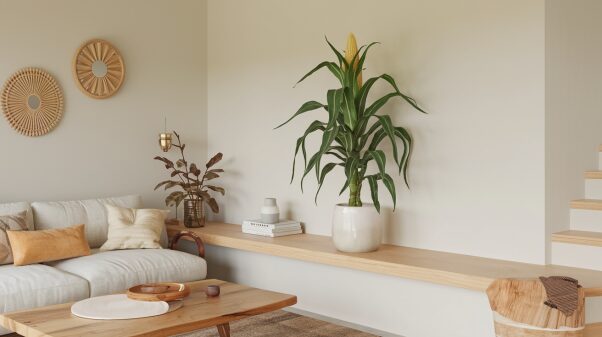
Corn plants are incredibly adaptable when it comes to interior styling. Whether you’re working with a sleek Scandinavian layout or a cozy vintage nook, this plant complements almost every interior design genre. One popular real-world example comes from interior designer Jenna Marshall, who featured a trio of Dracaena Massangeana plants staggered at different heights in a monochrome-themed studio. The result? A serene, tropical vibe that added texture and height without overwhelming the space.
Another creative use of corn plants is integrating them with ambient lighting. When placed near floor lamps or natural light sources, their glossy leaves create dynamic shadows that add depth and motion to otherwise static interiors. Home décor enthusiasts often use spotlighting or uplights at the base of the plant to enhance this effect—especially in rooms with high ceilings or neutral tones that can use a dash of natural vibrancy.
For eco-conscious and space-challenged plant lovers, consider pairing your corn plant with floating shelf installations or nesting it in bespoke plant stands made from reclaimed wood. This not only saves floor space but enhances the verticality of the plant, drawing the eye upward and creating a more layered design effect.
A final decor tip? Pair your corn plant with textured backgrounds such as brick, wood paneling, or patterned wallpaper. The juxtaposition between structured foliage and an intricate background can add a contemporary flair that feels both fresh and grounded. And for smaller living areas, placing a corn plant near mirrors can create the illusion of more greenery—an old designer trick for adding depth without clutter.
Conclusion
The corn plant is more than just a pretty piece of greenery—it’s a multifunctional marvel that brings design harmony, air-purifying power, and effortless tropical charm into any space. Whether you’re dealing with tight square footage, curious pets, or aesthetic indecision, this low-maintenance botanical star is versatile enough to rise to the occasion. From East-facing entryways to chic modern offices, corn plants can be styled to “pop” in ways both subtle and dramatic.
By understanding their basic needs—light, water, and temperature—you ensure they not only survive but thrive in your indoor sanctuary. But perhaps even more importantly, you integrate a living, breathing element that supports both physical wellness and emotional calm. Just like with raised bed gardening tomatoes, success lies in thoughtful placement, consistent care, and a touch of creative experimentation.
So whether you’re a plant novice or a seasoned indoor jungle curator, the corn plant is an exceptional addition to your décor arsenal—one that bridges beauty with purpose.
Frequently Asked Questions
How do you care for a corn plant indoors?
Corn plants need bright, indirect light, moderate watering when the top inch of soil is dry, and a stable indoor temperature between 65–80°F. Fertilize monthly during growing seasons and keep away from cold drafts or direct sunlight.
What are the light requirements for indoor corn plants?
These plants thrive in filtered, indirect sunlight. East or north-facing windows are ideal. Prolonged exposure to direct sunlight can lead to leaf burn, while too little light can cause yellowing or slow growth.
How do you grow a corn plant indoors?
Start with a healthy potted plant or a cutting. Use a well-draining mix and water regularly, allowing soil to dry slightly between waterings. Keep in a warm, humid spot with bright indirect light, and avoid over-fertilizing.
What’s the best soil for indoor corn plants?
A mix of peat moss, perlite, and light compost works well. The key is good drainage and slight moisture retention to mimic tropical forest floors.
How often should I water my indoor corn plant?
Water about every 7–10 days in warmer months and every 14 days in cooler seasons. Ensure the top inch of soil is dry before rewatering.
Why are my corn plant’s leaves yellowing?
Most commonly caused by overwatering or low light. Ensure good drainage, reduce watering frequency, and place the plant near a brighter area (but not in direct sun).

Robert Martin is a passionate blogger and versatile content creator exploring the intersections of personal finance, technology, lifestyle, and culture. With a strong background in financial literacy and entrepreneurship, he helps readers make smarter money moves, build sustainable side hustles, and achieve financial independence.
Beyond finance, Robert shares his insights on home decor and gardening—offering practical ideas for creating beautiful, functional living spaces that inspire comfort and creativity. He also dives into the dynamic worlds of sports and celebrity news, blending entertainment with thoughtful commentary on trends that shape today’s pop culture.
From decoding the latest fintech innovations to spotlighting everyday success stories, Robert delivers content that’s informative, relatable, and actionable. His mission is to empower readers to live well-rounded, financially confident lives while staying inspired, informed, and ahead of the curve.

